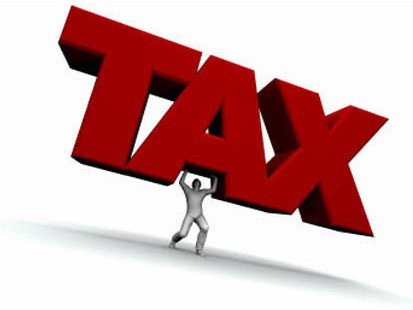How our tax system works
Post on: 16 Март, 2015 No Comment

Whether filing for a tax loss or claiming an RRSP contribution, understanding the rules can only make you a better investor
By JOHN HEINZL
00:00 EST Thursday, December 02, 2010
It’s tax-loss selling season, when investors dump their dogs and use the losses to offset capital gains realized during the year. But as our first reader question illustrates, investors need to tread carefully lest they run afoul of Canada Revenue Agency rules.
We’ll also tackle a couple of other tax-related questions. Developing a basic understanding of how our tax system works can only make you a better investor, so let’s dig in.
If I sell a stock in a non-registered account for a tax loss but buy it back again in under 30 days in a registered account, will I lose my capital loss claim?
Yes, you will.
Ross McShane, director of financial planning with McLarty & Co. in Ottawa, said investors must wait at least 30 days after selling a stock before repurchasing it, even if the transactions occur in different accounts. Otherwise, the CRA will consider the sale a superficial loss, which can’t be used to offset capital gains.
The loss will be denied if you repurchase the stock in the RRSP during the 30-day period as the RRSP [or other registered account] is considered an ‘affiliated person,’ he said. The restriction also applies to any purchase in the 30 days before the security is sold.
The idea here is that investors shouldn’t be allowed to sell a capital property for a tax-loss if they, or someone affiliated with them, effectively maintain control of the same security. Other examples of affiliated persons include a spouse or common-law partner, or a corporation that is controlled by you or your spouse.
A superficial loss has some value, however. It is added to the adjusted cost base of the repurchased securities, which ultimately decreases the future capital gain or increases the future capital loss on the shares.
To avoid triggering a superficial loss, Mr. McShane suggests the following strategy:
The investor could consider buying a stock within the same sector or a mutual fund or exchange-traded fund with similar objectives to avoid sitting in cash during this 30-day period and missing out on investment growth, he said.
After the 30-day period, the investor could dispose of this temporary position and buy back the position they originally sold in the non-registered account.
If I make an RRSP contribution one year, do I have to claim the deduction against my income in the same year?
No. RRSP deductions may be carried forward indefinitely, Mr. McShane said.
It may be advantageous to do this if:
1) the tax savings achieved by deducting the contribution in the current year is minimal given the taxpayer’s low marginal tax bracket. In this case, the contribution could still be made with the benefit that the investment is growing in a tax sheltered environment;
2) the taxpayer’s marginal tax bracket is expected to be much higher in a later year and the tax savings will be greater than they are today. The taxpayer must weigh the fact that they are forfeiting the lost tax refund and the use of the money today, against the greater tax savings tomorrow.

You’ve written that, under the Canada-U.S. tax treaty, there is no withholding tax on U.S. dividends as long as the stock is held in an RRSP or registered retirement income fund. What are the rules on interest from U.S. bonds?
First, let’s review the (rather complex) rules governing withholding tax on U.S. dividends. Then we’ll address how U.S. interest in treated by the taxman.
For dividends, the key thing to know is that if you hold U.S. stocks inside an account that provides pension or retirement income — an RRSP, RRIF or locked-in retirement account, for example — there should be no U.S. tax withheld. So the entire dividend should land in your account.
However, if you hold U.S. stocks in a tax-free savings account or registered education savings plan — which don’t qualify as pension or retirement vehicles — you’ll face a 15-per-cent U.S. withholding tax. (This 15-per-cent rate is reduced from the statutory non-treaty rate of 30 per cent; be sure your broker fills out a W-8BEN form so you don’t get dinged at the higher rate.)
In a non-registered account, things are a bit more complicated. You’ll face the 15-per-cent withholding tax on U.S. dividends, and you’ll have to pay Canadian tax on the full amount of the dividend as well. But you can usually apply the 15 per cent that was withheld as a foreign tax credit; the net result is you’ll end up paying tax on the dividend at your marginal rate.
Confused yet? Thankfully, taxation of U.S. interest is more straightforward.
Following recent changes to the Canada-U.S. tax treaty, there is no longer any withholding tax on U.S. interest paid to Canadian investors. This is true regardless of whether the security is held in a non-registered account, RRSP, RRIF, LIRA, RESP or TFSA, said Brian Quinlan, partner at Campbell Lawless Professional Corporation chartered accountants in Toronto.
Therefore, the issue has become moot, he said.
You’ll still have to pay Canadian tax on U.S. interest earned in a non-registered account, of course, just as you would if you were earning Canadian interest.














